What Can Guandata BI Do?
Overview
Enterprises are currently facing the challenge of realizing data value and achieving sustainable business growth. Building full-chain data analysis and decision-making capabilities is the best way to solve this data challenge. We adhere to the "one-stop" concept, integrating key links in the business decision chain, so that users at all levels can participate according to their roles and needs to obtain the required data support and insights.
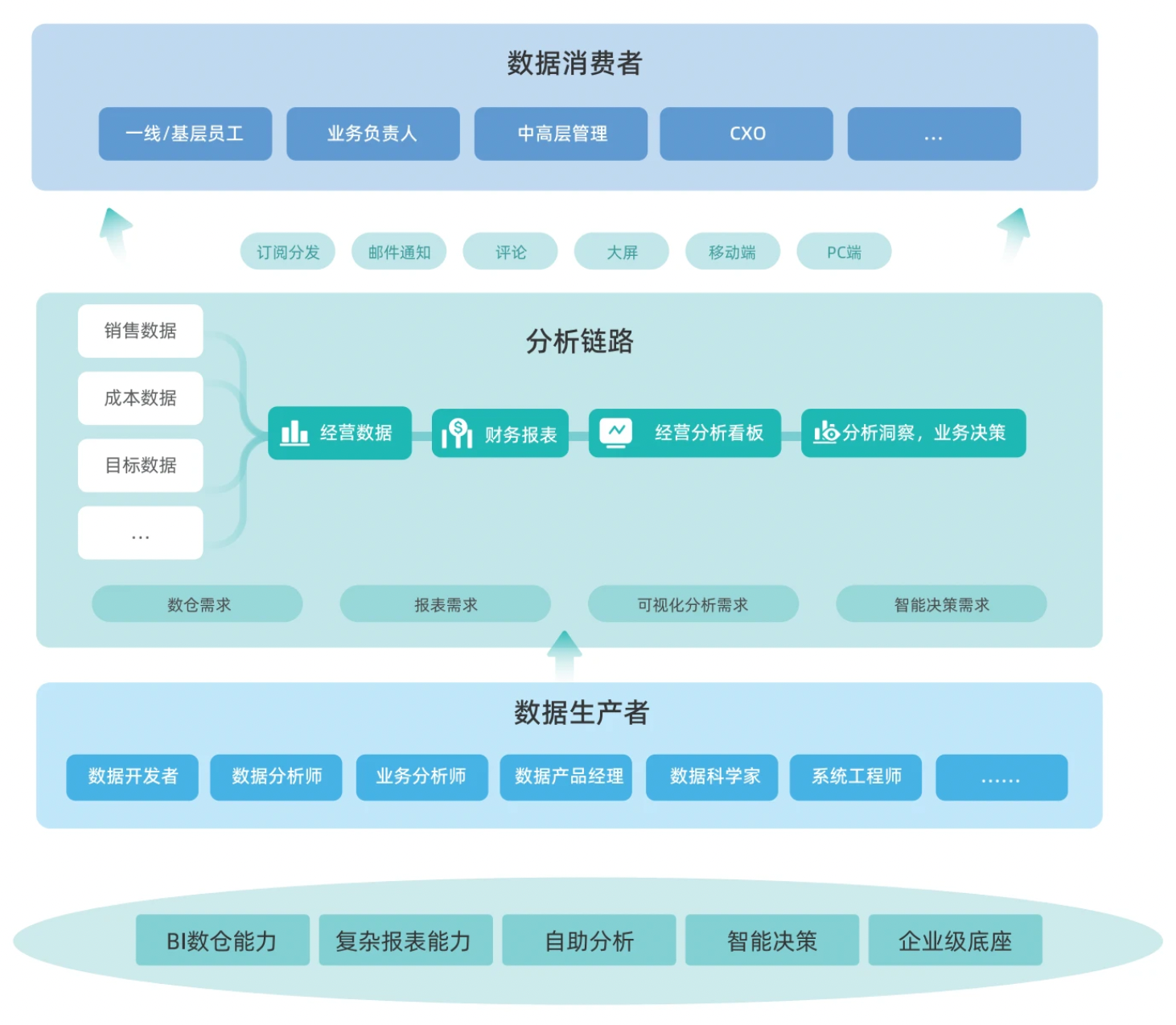
The above diagram shows a business analysis decision chain, mainly covering four key needs of users in business decision-making: data warehouse needs, visualization analysis needs, reporting needs, and intelligent decision-making needs. To ensure smooth operation at each stage, five core capabilities of Guandata BI are required: data warehouse capability, reporting capability, self-service analysis, intelligent decision-making, and enterprise-level platform support.
Capabilities Provided by Guandata BI
BI Data Warehouse Capability
BI is closely related to data warehousing. Enterprises can choose "Guandata BI" based on their actual data warehouse construction, integrating enterprise BI with centralized data warehouses or building agile business data warehouses. The biggest difference from traditional BI is that Guandata BI has a built-in data lake storage solution, allowing enterprises or business departments to easily build agile data warehouses based on the built-in lakehouse. Guandata BI also supports deep integration with Hadoop and Databricks, thus deeply integrating with existing centralized data warehouses. The integrated storage and computing capability of Guandata BI's lakehouse provides technical support for data cleaning, job scheduling, and other processes in the data development chain.
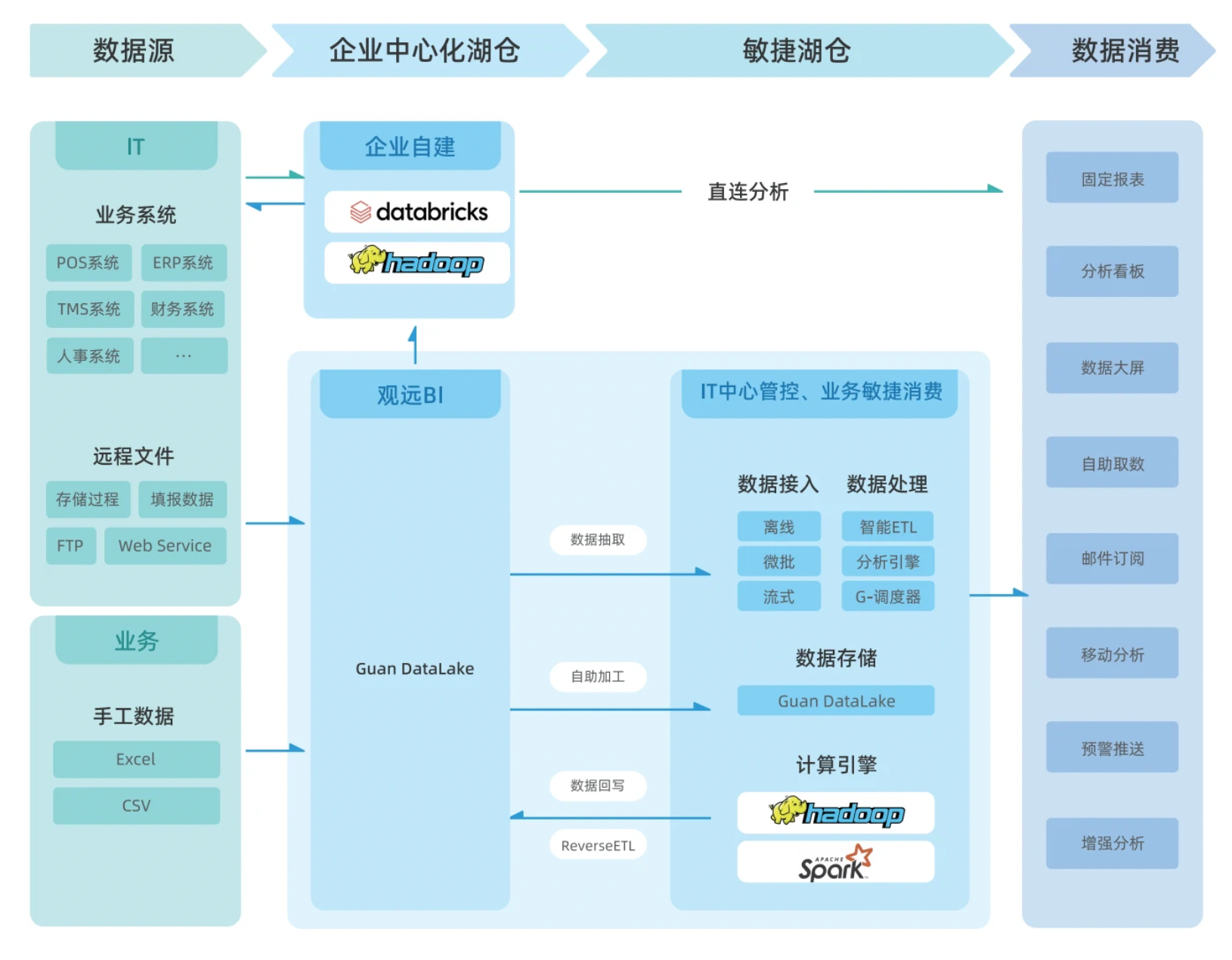
A typical data warehouse scenario (data integration and processing)
Simplified version: generally includes data integration, data cleaning, data modeling through job scheduling, and finally data management based on resource lineage, row/column permissions, etc.
1. Data Integration
Guandata BI provides comprehensive data integration capabilities, breaking enterprise data silos. Currently, it supports JDBC, API, and other methods to integrate files, databases, and various types of data, including but not limited to 40+ built-in databases, self-service integration with cloud vendors/domestic external databases, local files, Web Service, FTP/SFTP, stored procedures, and other multi-source data integration solutions.
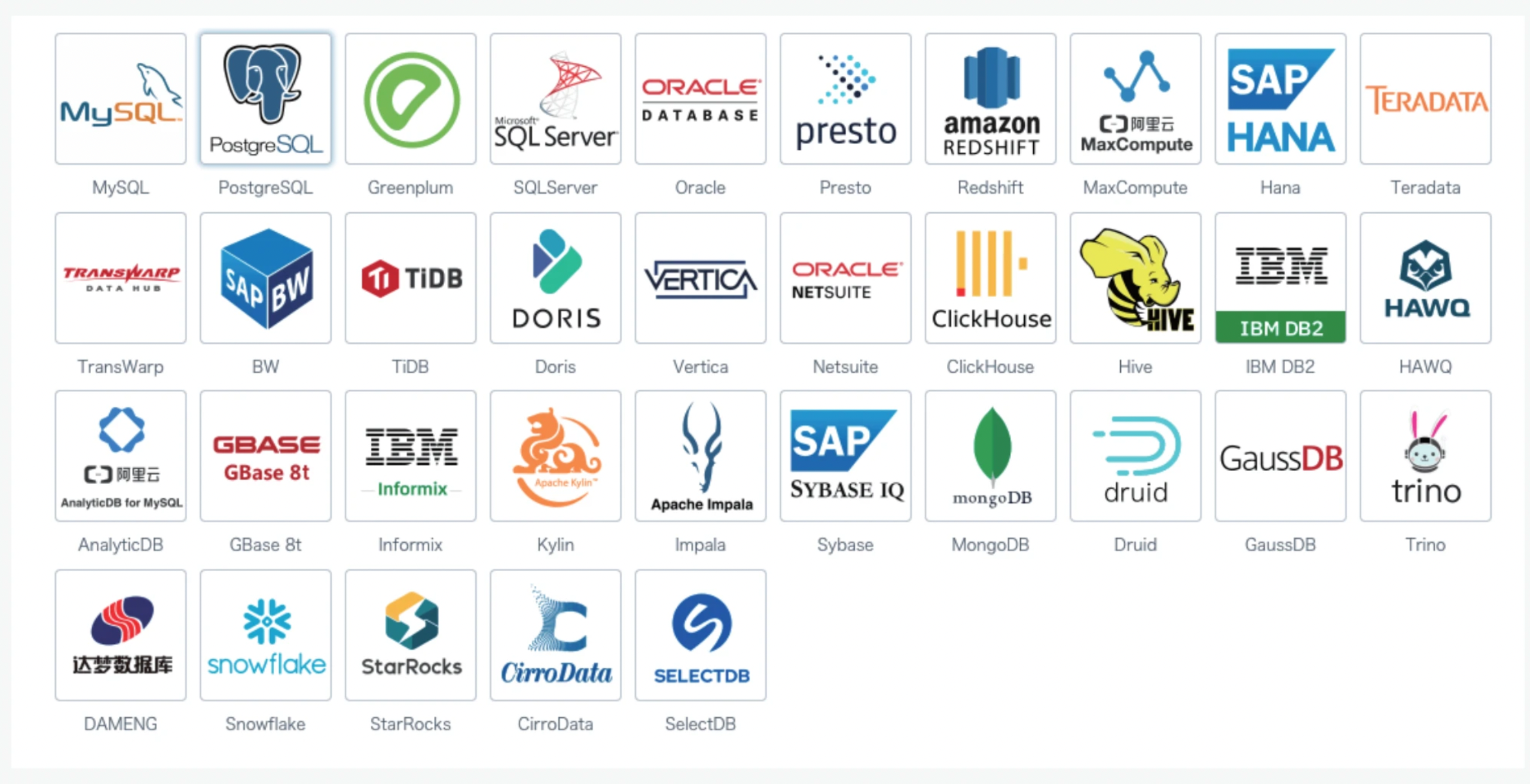
2. Data Preparation
Smart ETL is a fully drag-and-drop, self-service data preparation and data warehouse construction tool provided by Guandata BI for business users. It enables real-time preview and multi-dimensional output after integrating and processing multi-source data, allowing data cleaning and integration.
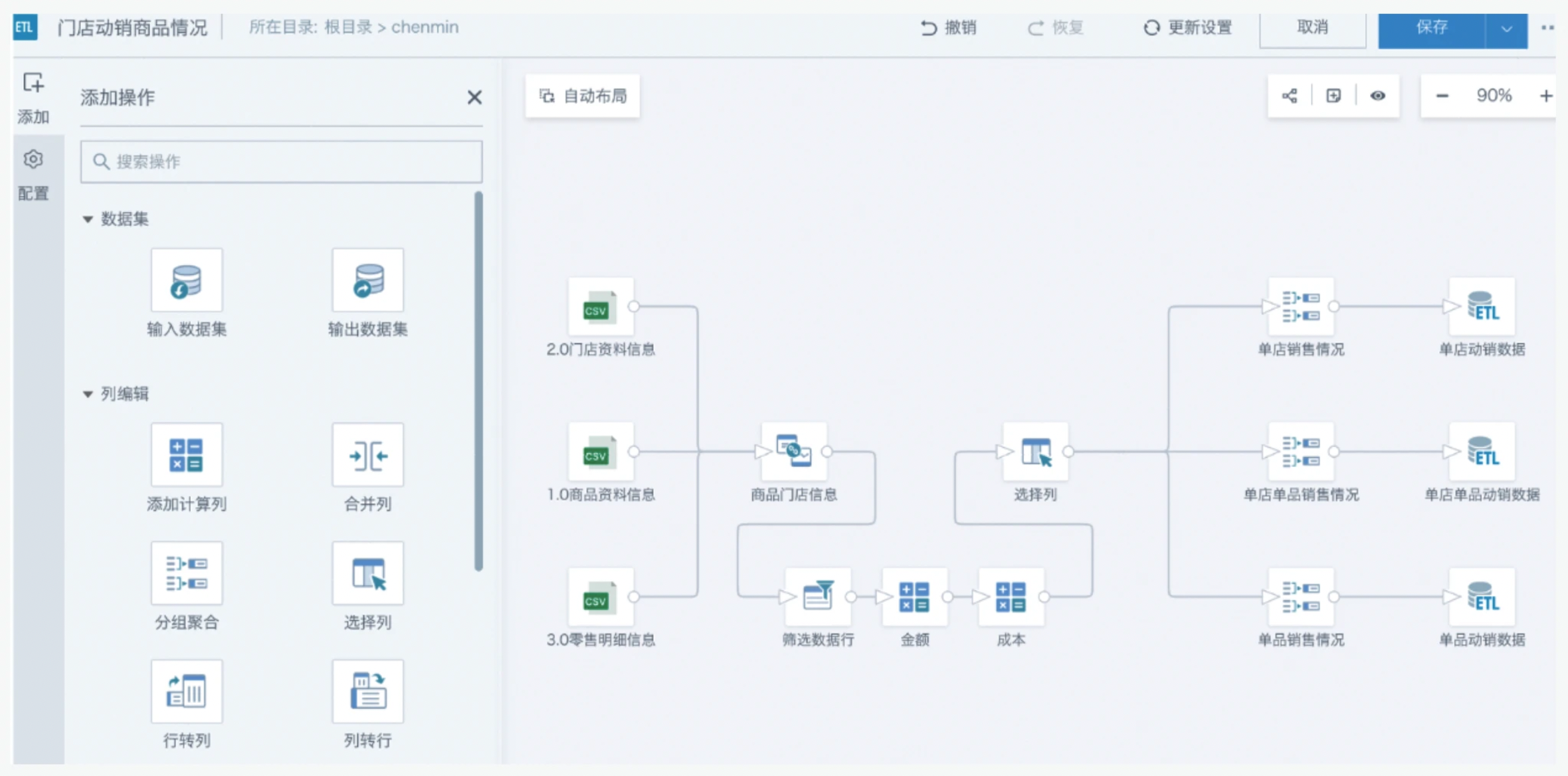
3. Data Modeling
Smart ETL, combined with advanced scheduling, data writeback, and other data functions, can adapt to more complex business scenarios, such as layered data construction and supporting complex business models.
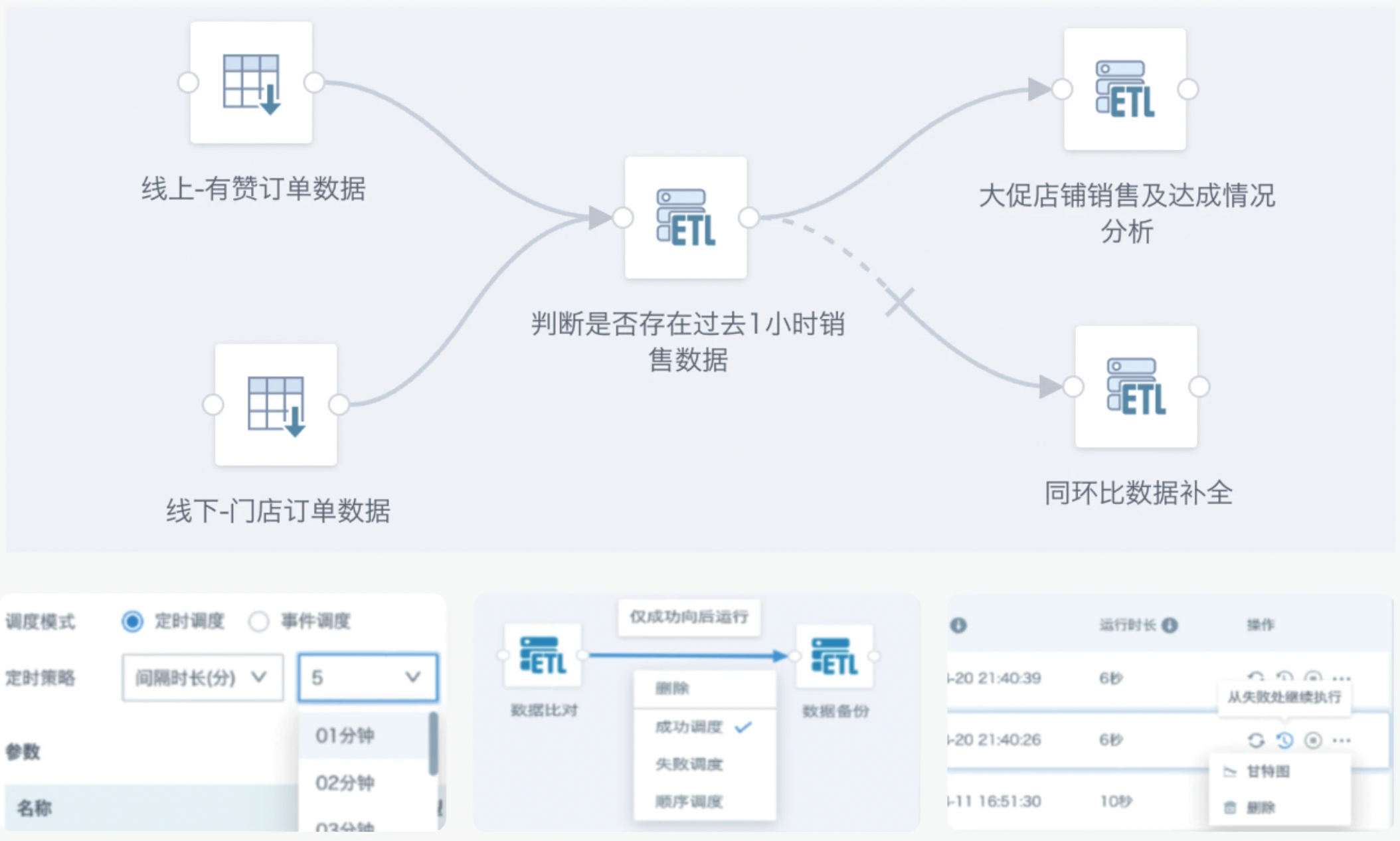
4. Data Management
Through resource lineage, users can clearly understand the source and destination of data, upstream and downstream dependencies, and risk assessment of resource changes, thus better managing data quality and compliance, providing a more reliable data foundation for enterprises.
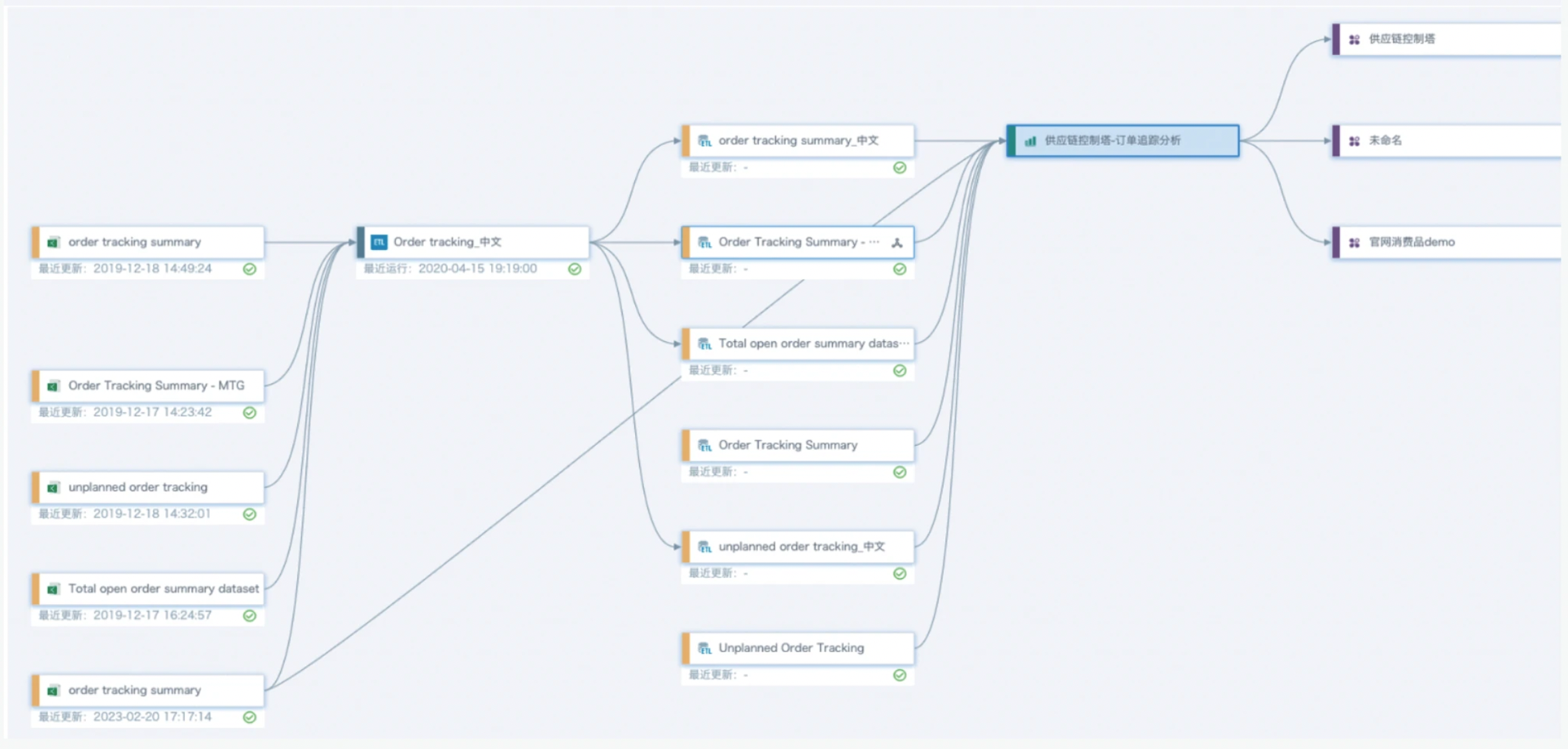
Data Analysis Capability
Visual self-service analysis allows users to quickly master 80% of data analysis work in two days. Various analysis charts can be created through simple drag-and-drop. It also supports data visualization presentations such as screen casting and slides, meeting various data expression needs. Guandata BI provides rich data interaction analysis operations, such as drill-down, linkage, and jump, enabling users to analyze data layer by layer with one click and discover problems. At the same time, Guandata BI provides secure and controllable multi-terminal access, allowing users to easily build business data applications and portals, enjoy immersive analysis experiences, and maximize enterprise data value.
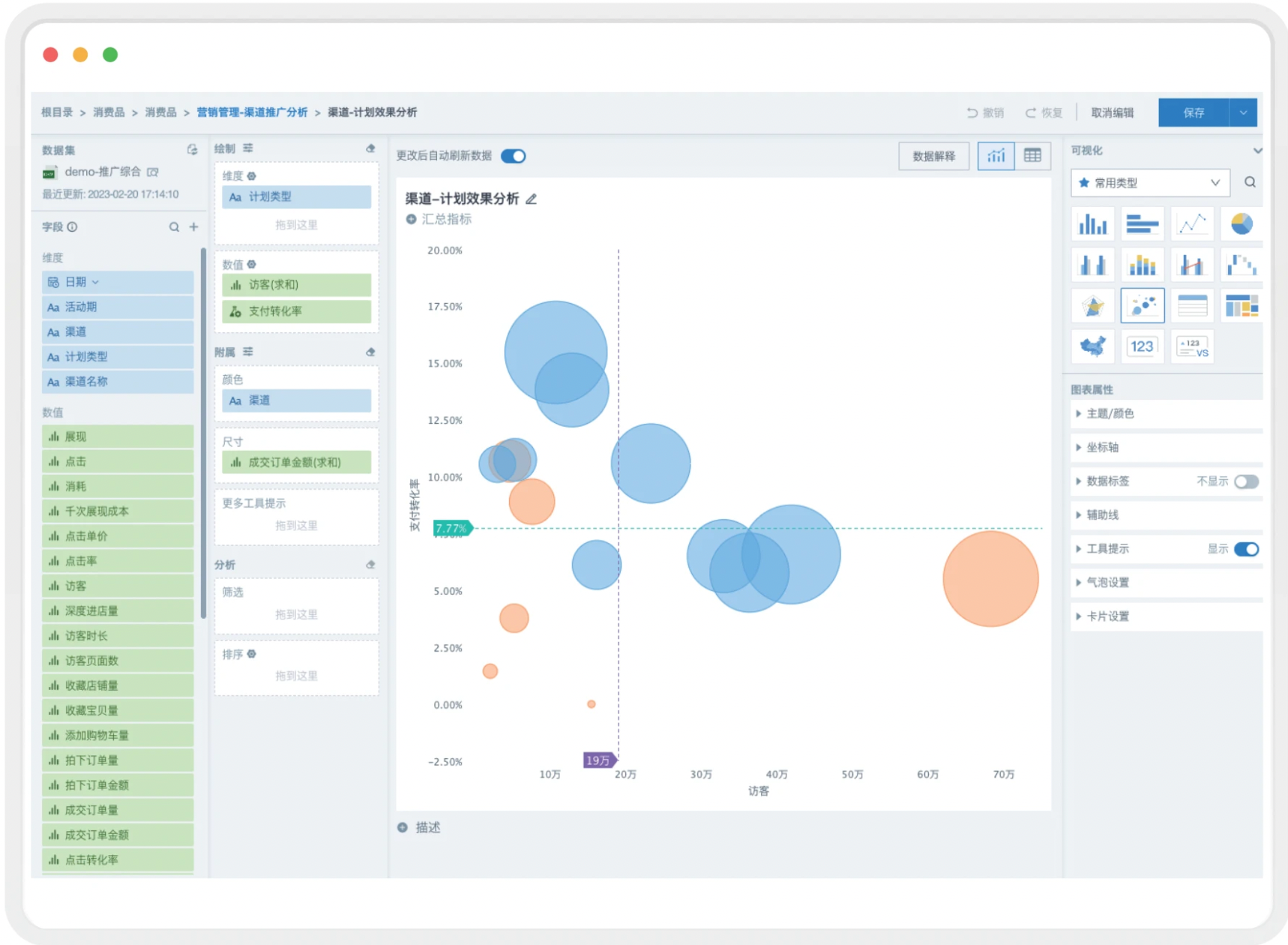
A simple self-service analysis process (data analysis and visualization)
Simplified version: generally includes chart analysis, interactive dashboards, multi-terminal adaptation, and data application/portal processes. Data consumption, combined with subscription alerts and open integration, enables key reports to be pushed regularly and frequently, and key indicators to be proactively alerted when abnormal, allowing data to reach users through multiple channels.
1. Chart Analysis
Guandata BI provides a variety of chart and table types for data analysis display. Users can quickly build charts through drag-and-drop design, and rich attribute configurations present intuitive, easy-to-understand, and beautiful analysis results.
Includes:
- Tables, indicator cards, maps, Sankey diagrams, and nearly a hundred basic and advanced charts.
- Visualization extensions based on D3/Highchart/Echarts/custom maps, etc.
- Supports dynamic time macros, global parameter references, etc., enabling dynamic queries and analysis in complex scenarios.
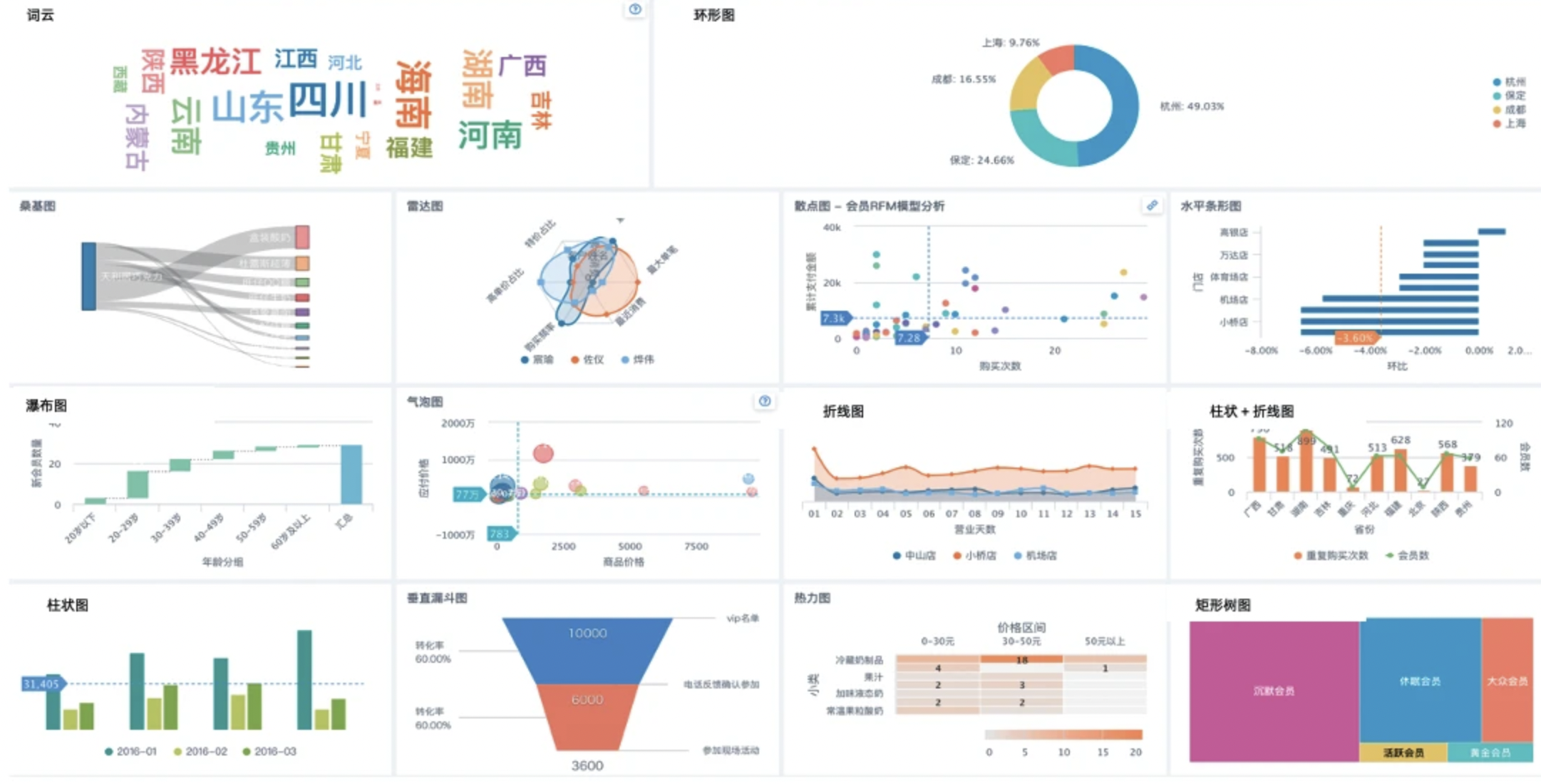
2. Interactive Dashboards
After creating chart cards, users can freely arrange them through drag-and-drop to complete analysis of specific business topics. Users can perform interactive analysis on dashboards, including chart linkage, multi-level drill-down, jump analysis, carousel display, etc.
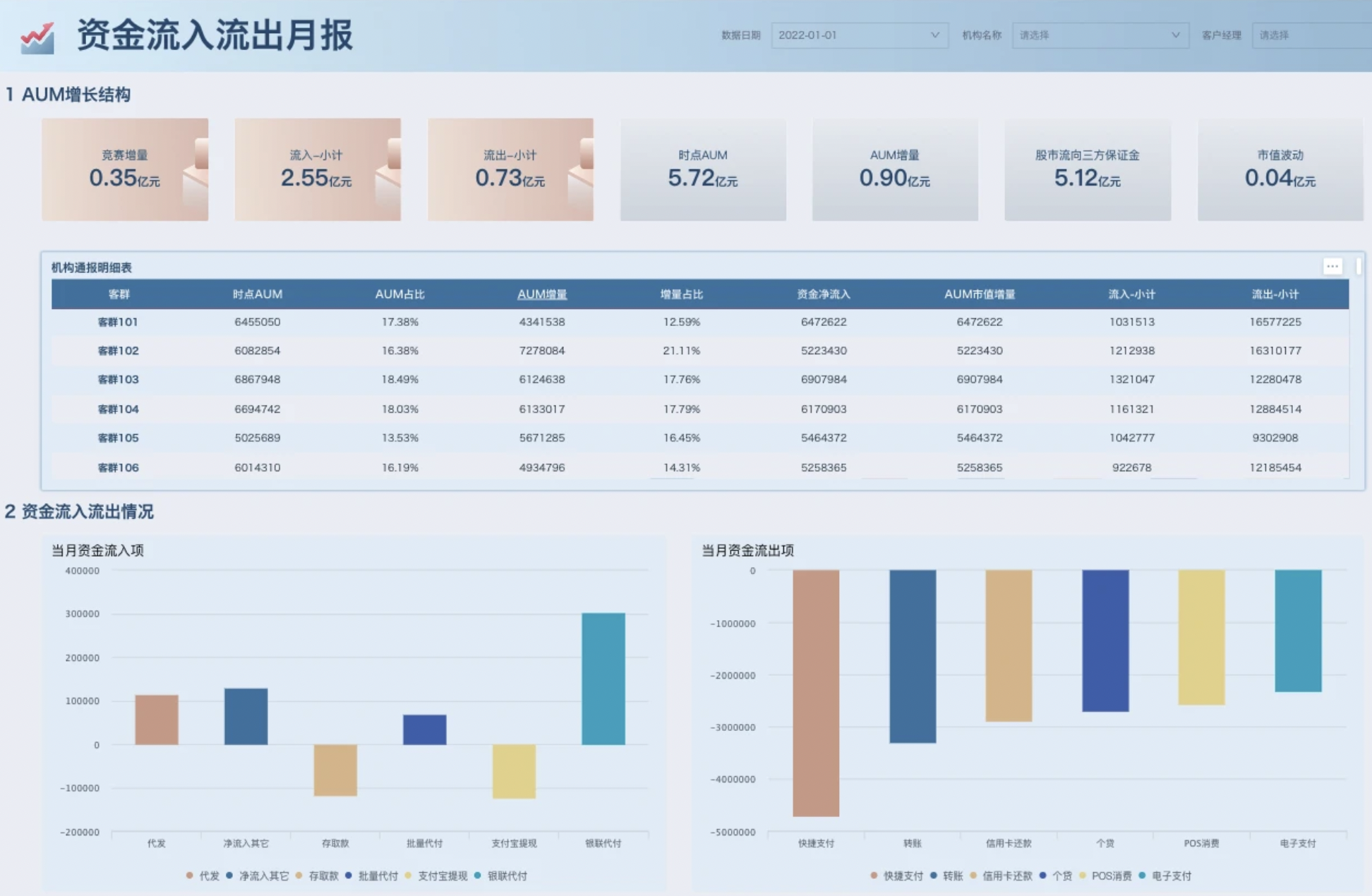
3. Multi-terminal Adaptation
Guandata BI dashboards use responsive layout design, adapting to multiple terminals with one design, supporting mobile and large screens by default. Combined with subscription & alert and open integration, users can easily understand the real-time business status of the enterprise anytime, anywhere.
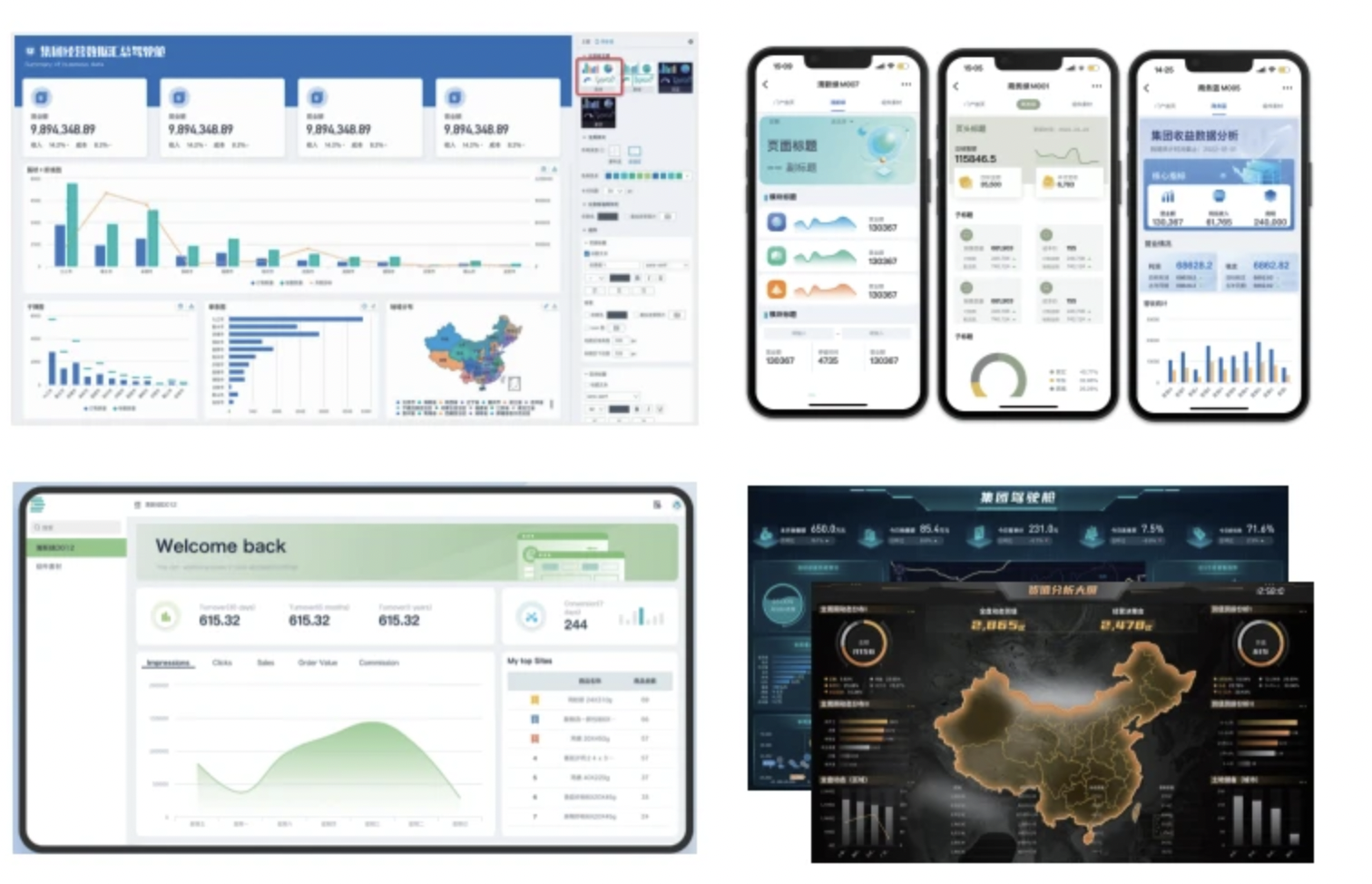
4. Data Application and Portal
Supports grouping data analysis applications (such as dashboards, reports, large screens, etc.) by department, business topic, etc., forming a unified access collection, i.e., "data portal." This provides an intuitive daily data access entry for various data consumers (especially senior management).
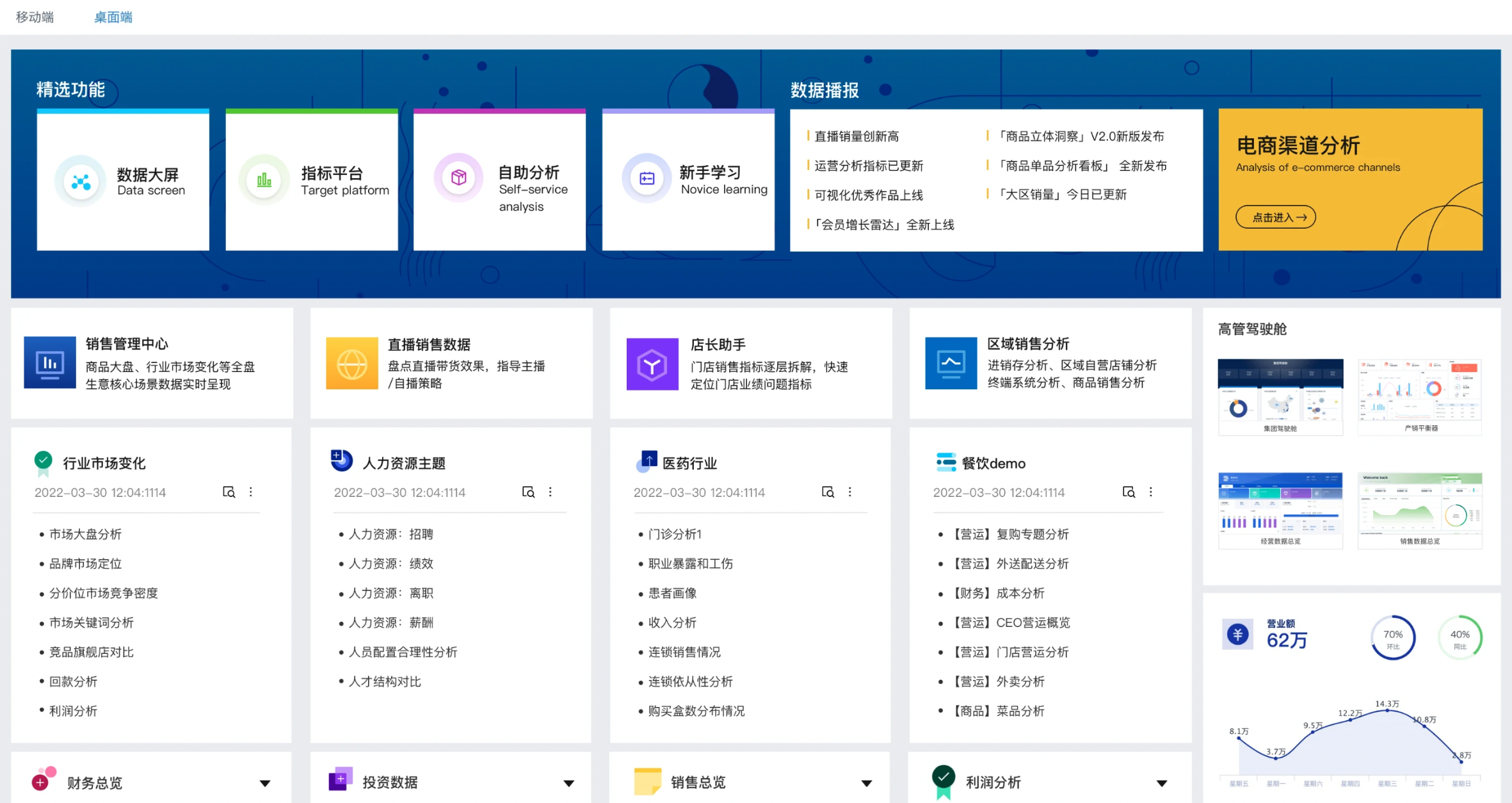
Complex Reporting Capability
No matter how BI develops, report analysis is always one of the core scenarios for every enterprise, involving financial reports, regulatory submissions, comprehensive management reports, and other core businesses. Therefore, reporting capability is also one of the cores of Guandata BI. Traditional reporting tools often have problems such as difficulty migrating offline reports online and separation from BI analysis, making it difficult for enterprises to quickly obtain a full picture of analysis for decision-making. Guandata BI's Chinese-style Report Pro function allows easy uploading of existing Excel files, is highly compatible with Excel operations, and enables business users familiar with Excel to easily and efficiently realize online Chinese-style reports.
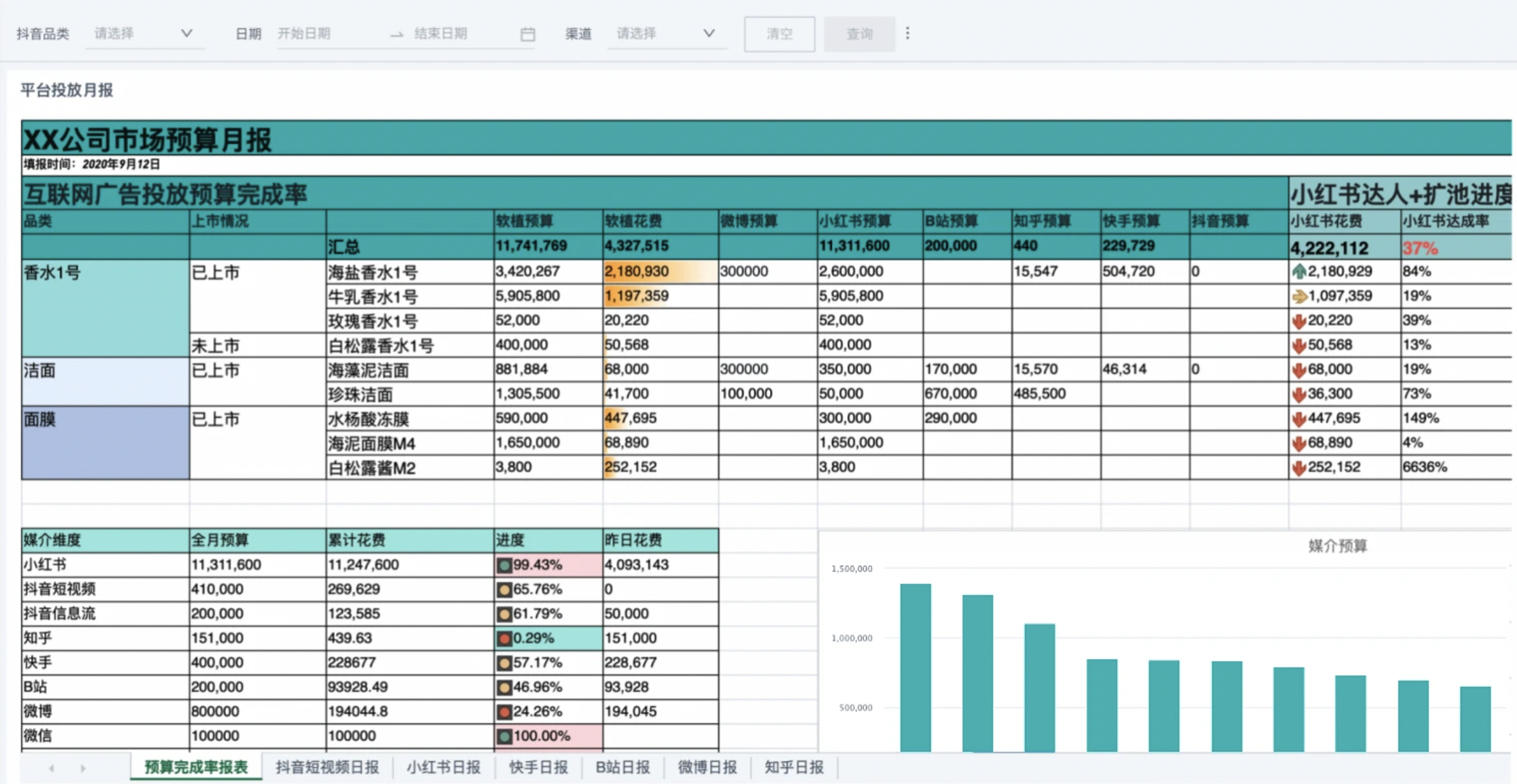
A typical report analysis scenario
Simplified version: generally includes data entry or Excel upload, report creation, report and visualization dashboard creation, and report analysis results. In addition to being consumed as visualization dashboards, reports can also be flexibly pushed to BI users as graphic subscription content.
1. Report Data Entry
Before report development, Guandata BI supports users to integrate various scattered and heterogeneous data within the enterprise. It also supports data reporting through fixed-format table entry, achieving an online entry experience similar to Excel and seamless integration of reporting and entry.
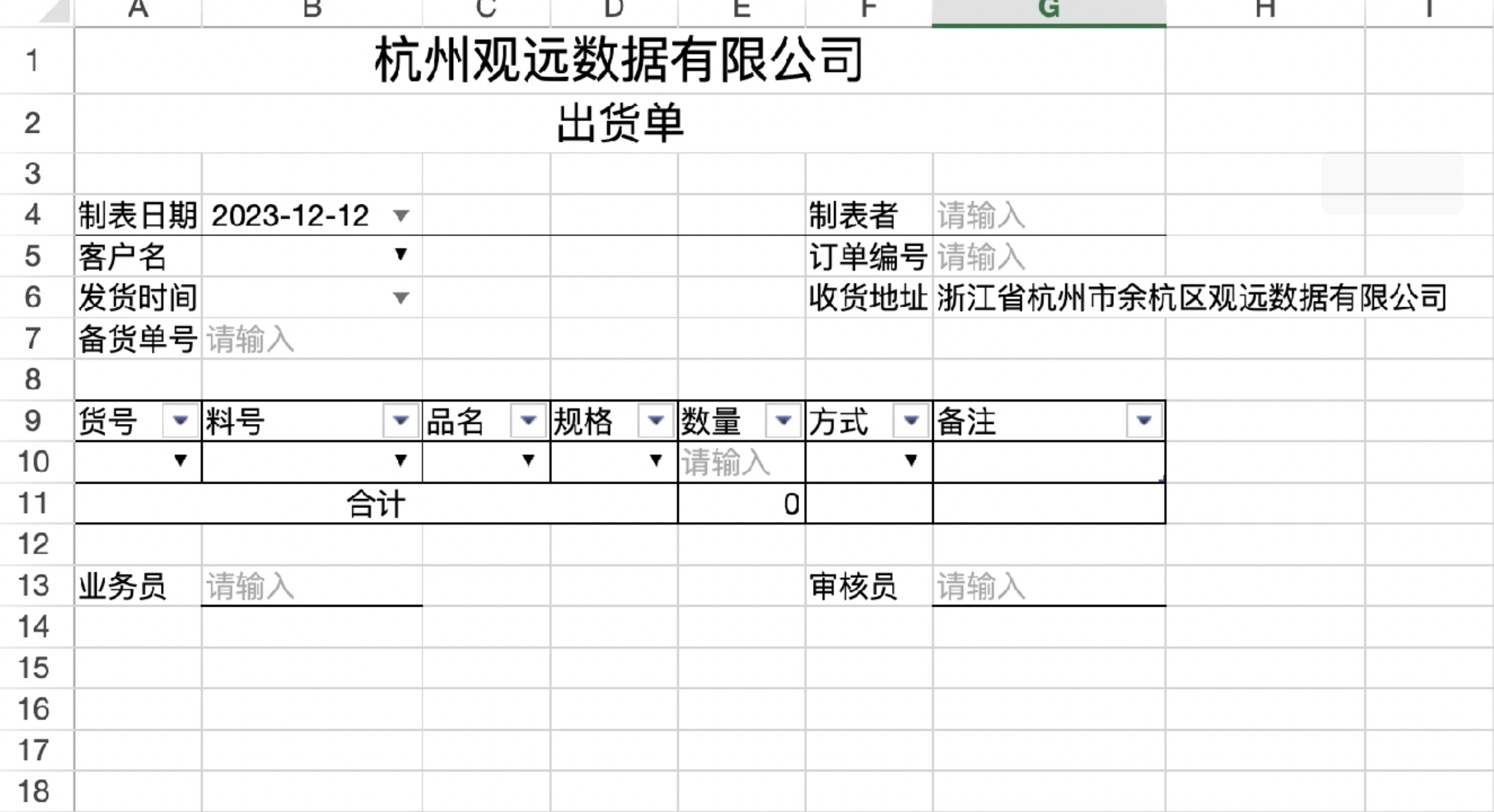
2. Report Creation
Chinese-style Report Pro is fully compatible with Excel's interactive experience and function capabilities. Simply import an Excel report to reuse table styles and inherit native formula calculation capabilities, quickly migrating it online. It supports multi-table association calculation, new indicator fields, and other analysis calculations, meeting the needs of using multiple data sources for report analysis.

3. One-stop Integrated Analysis
After report creation, it supports integration and interactive analysis with visualization, allowing users to gain more intuitive data insights. Guandata reports and BI are integrated and linked, with data, permissions, and experience interconnected, enabling enterprises to obtain a one-stop analysis panorama.
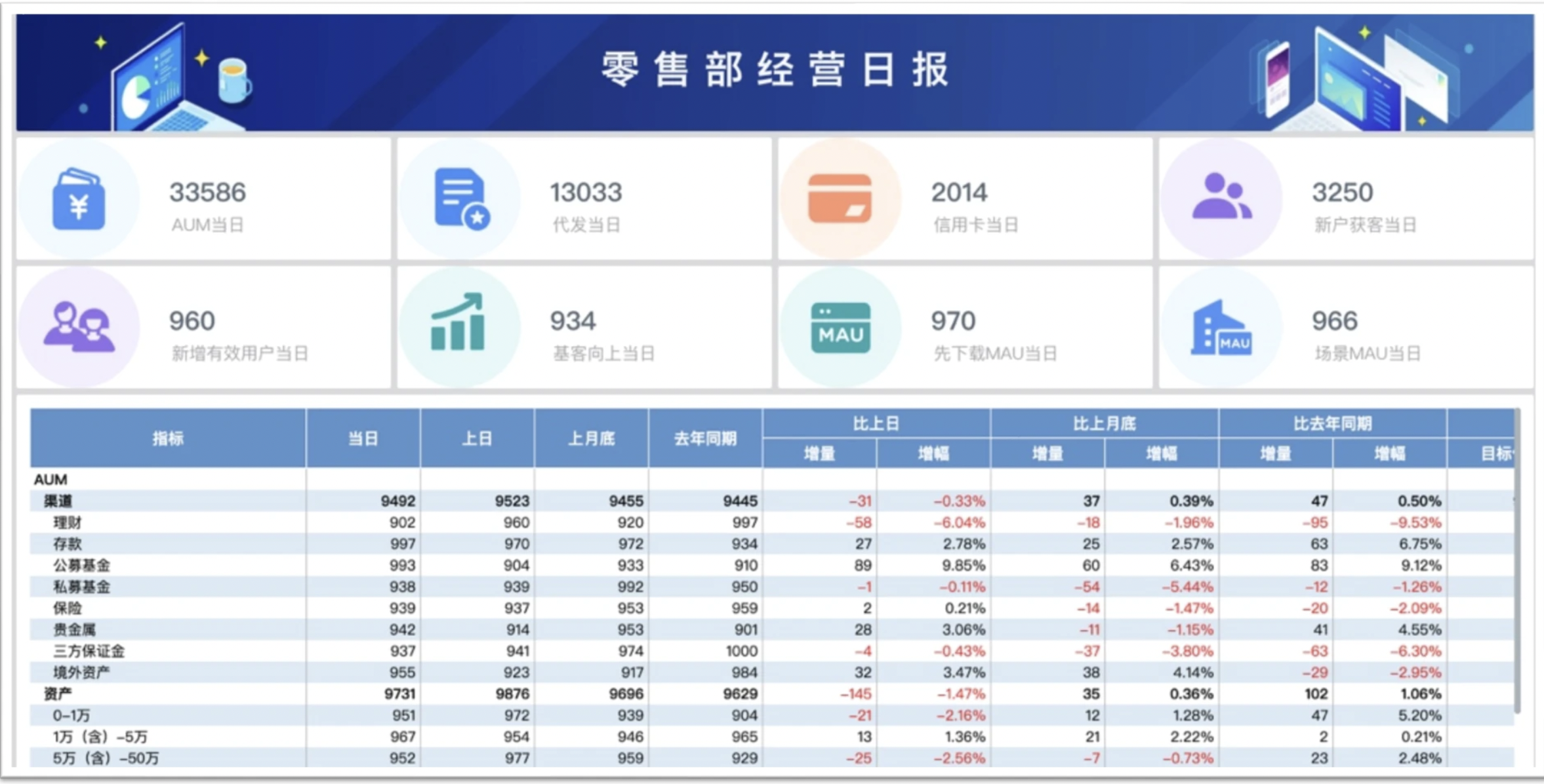
4. Graphic Subscription
To further enhance users' data sensitivity, users can also combine reports with subscription and alert functions as needed, and push data reports regularly through email, Feishu/WeCom/DingTalk (groups), and other channels. This enables internal collaboration from daily business analysis reports, periodic reports, to complex regulatory reports.
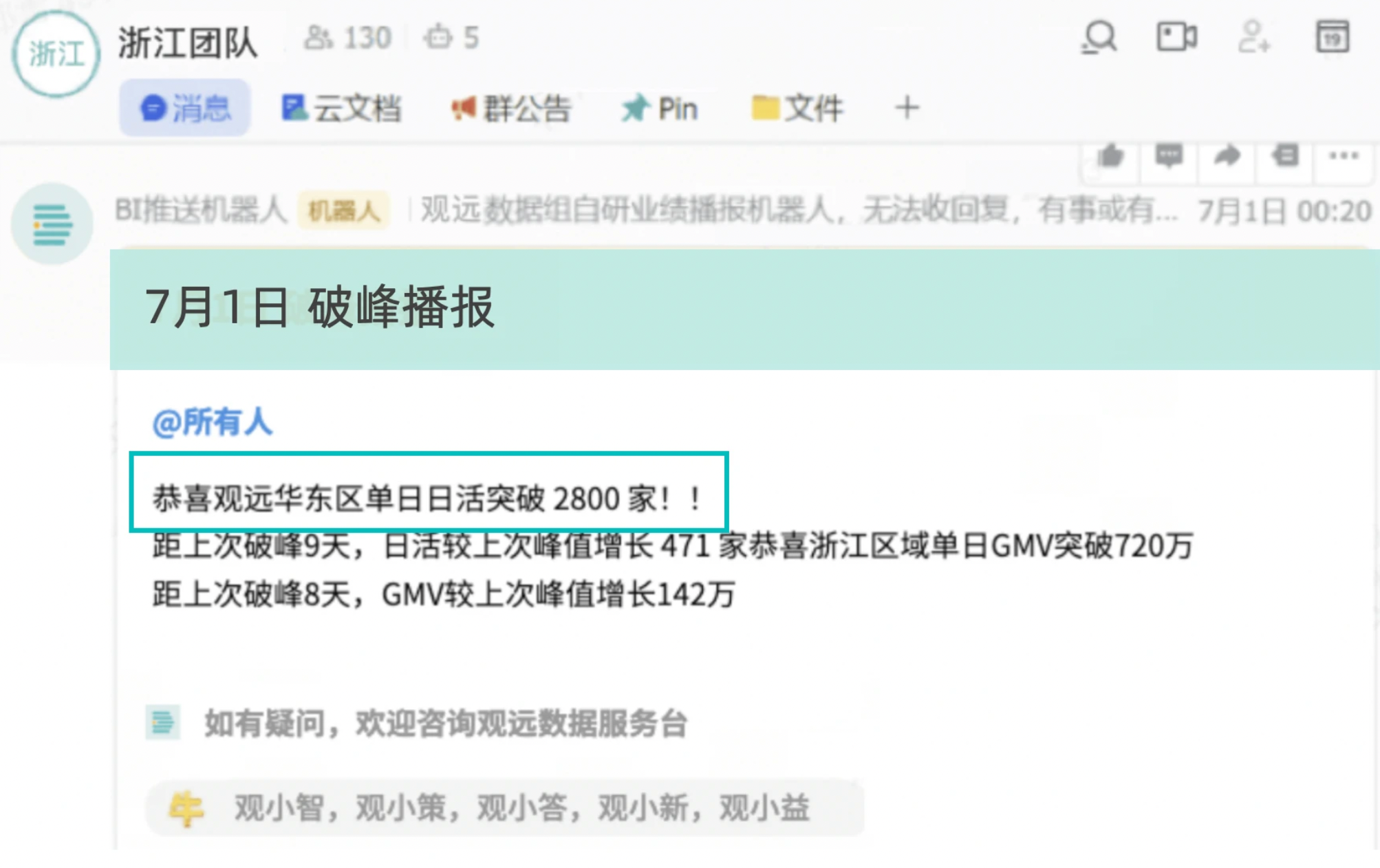
Intelligent Decision-Making Capability
Guandata BI provides a series of enhanced analysis capabilities, such as automatic attribution, insight-first analysis reports, and BI Copilot product applications that integrate GPT technology and data application best practices, enabling users to quickly and autonomously extract value from data with low thresholds and obtain more accurate insights more efficiently.
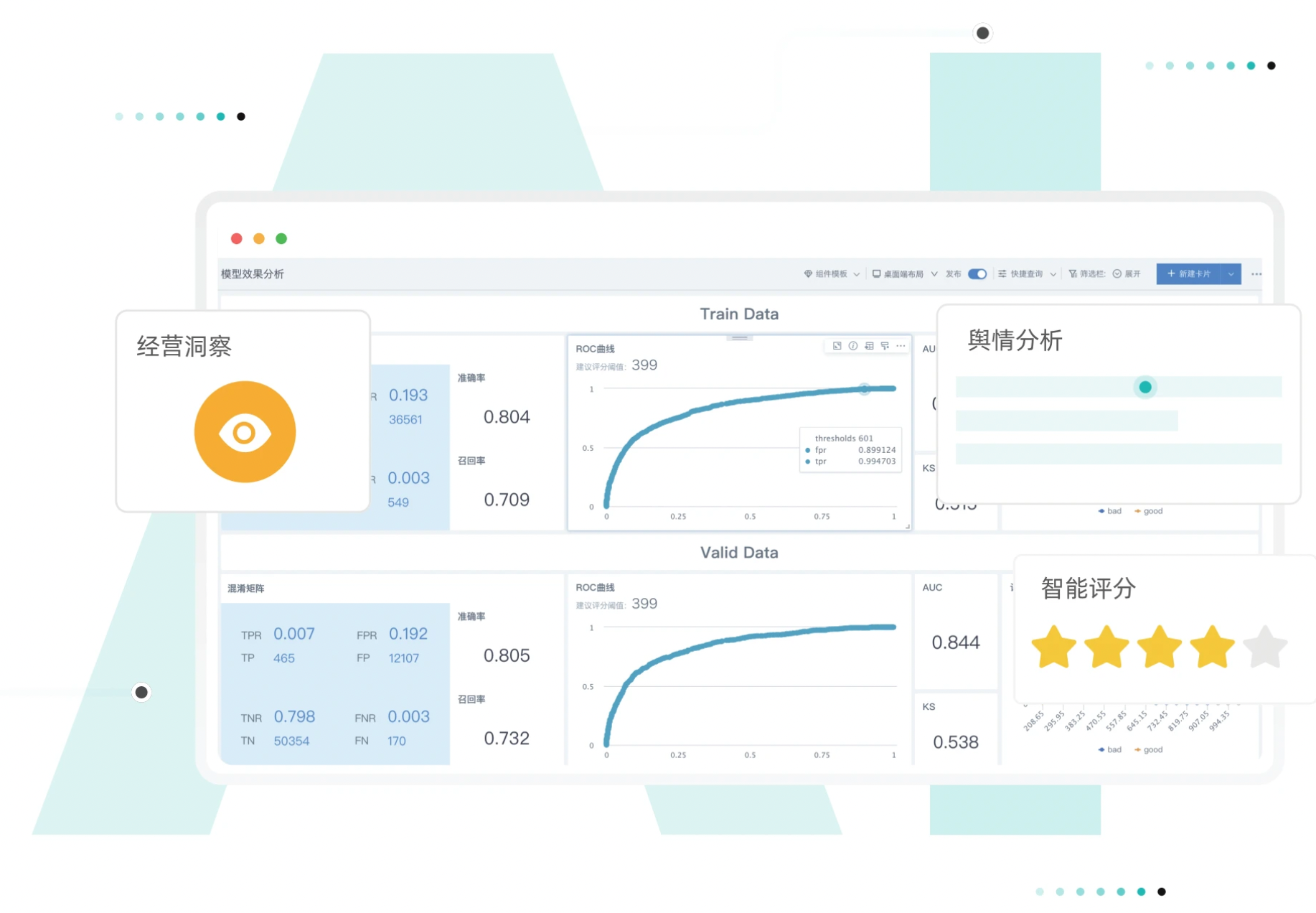
A typical intelligent decision-making scenario
The most clear application of intelligent decision-making in actual business is to reduce the cost of data understanding and improve decision-making efficiency. The implementation path mainly includes AI algorithm model and analysis thinking template configuration, intelligent analysis based on insight strategies, conclusion report generation, and interactive insights.
1. AI Model Accumulation
Guandata supports various AI models such as time series forecasting, trend analysis, attribution analysis, scorecards, and sentiment analysis, enhancing users' analysis depth and decision quality in complex scenarios.
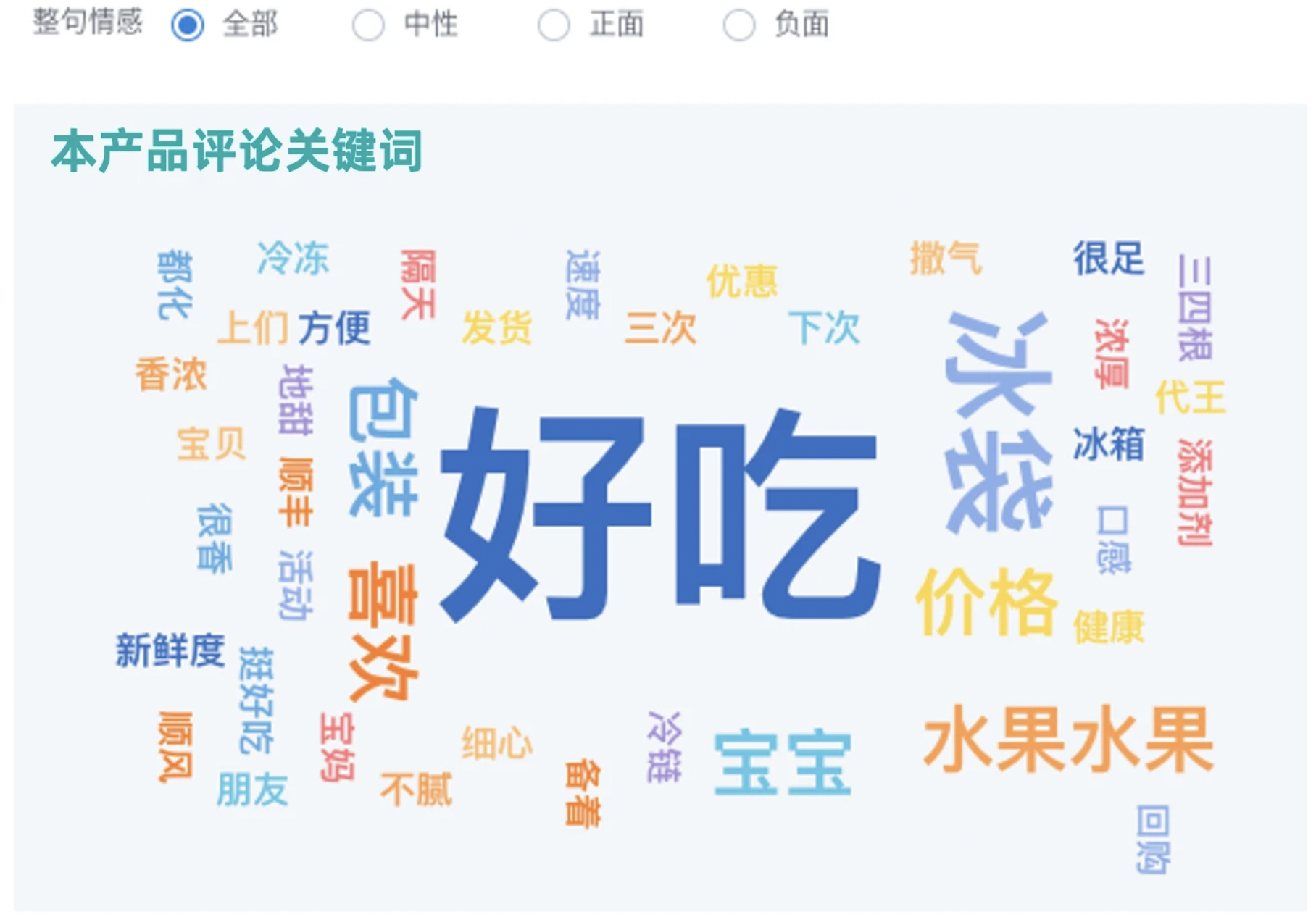
2. Automatic Report Generation
Using flexible and configurable decision tree templates, users can configure business analysis logic and automatically generate customized reports that are easy to interpret, avoiding analysis result bias caused by experience or cognitive differences.

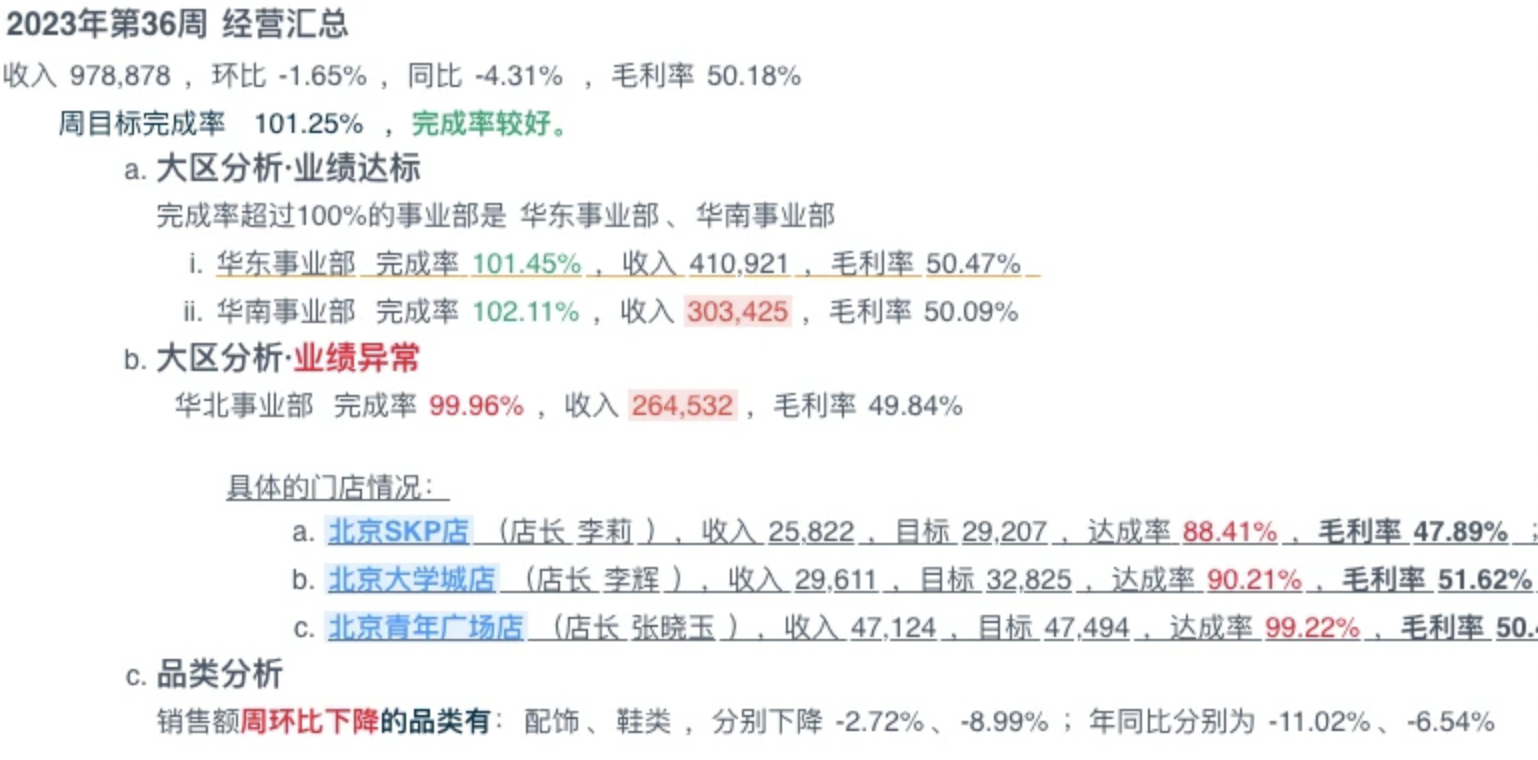
3. Rule-based Insights
Based on decision tree analysis configuration, anomalies are automatically identified and attribution analysis is performed across multiple dimensions, with conclusion reports automatically generated, allowing users to quickly understand the causes of abnormal indicators.
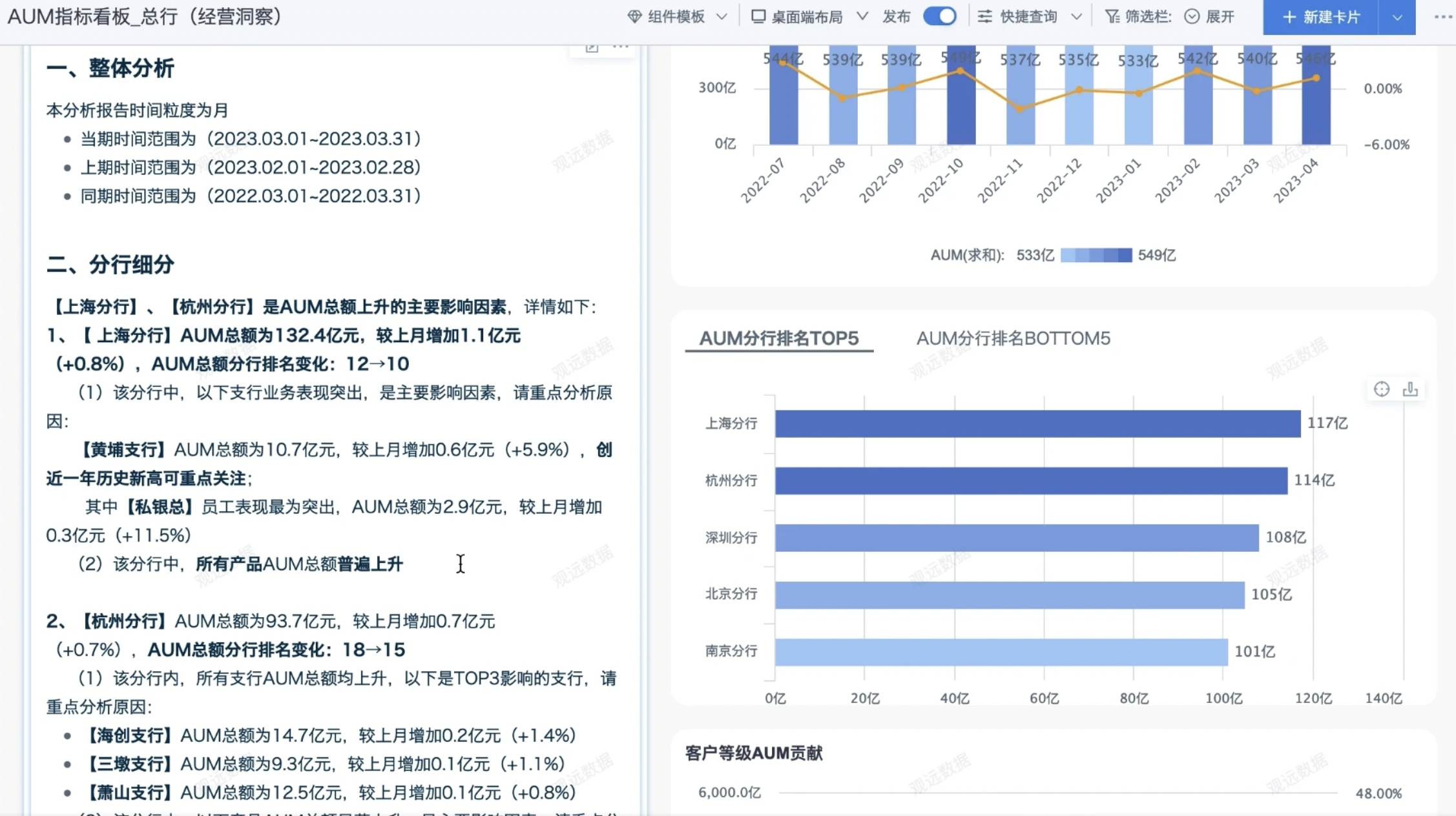
4. BI Copilot
The BI Copilot product series integrates BI with large language models, reshaping the entire data analysis chain and further lowering the application threshold for data analysis. Users can automatically complete Q&A for indicator data through multi-turn dialogue, automatically select and match data tables based on business topics, intelligently attribute and locate problems, and automatically generate improvement suggestions based on the business knowledge base.
Enterprise-level Support
Guandata BI fully supports scaling from team to enterprise level, providing high-performance response for large-scale data, continuous service and stable support for large-scale jobs, efficient platform governance for large-scale business, and fine-grained security control, enabling the BI platform to meet the growing user and business needs of enterprises.
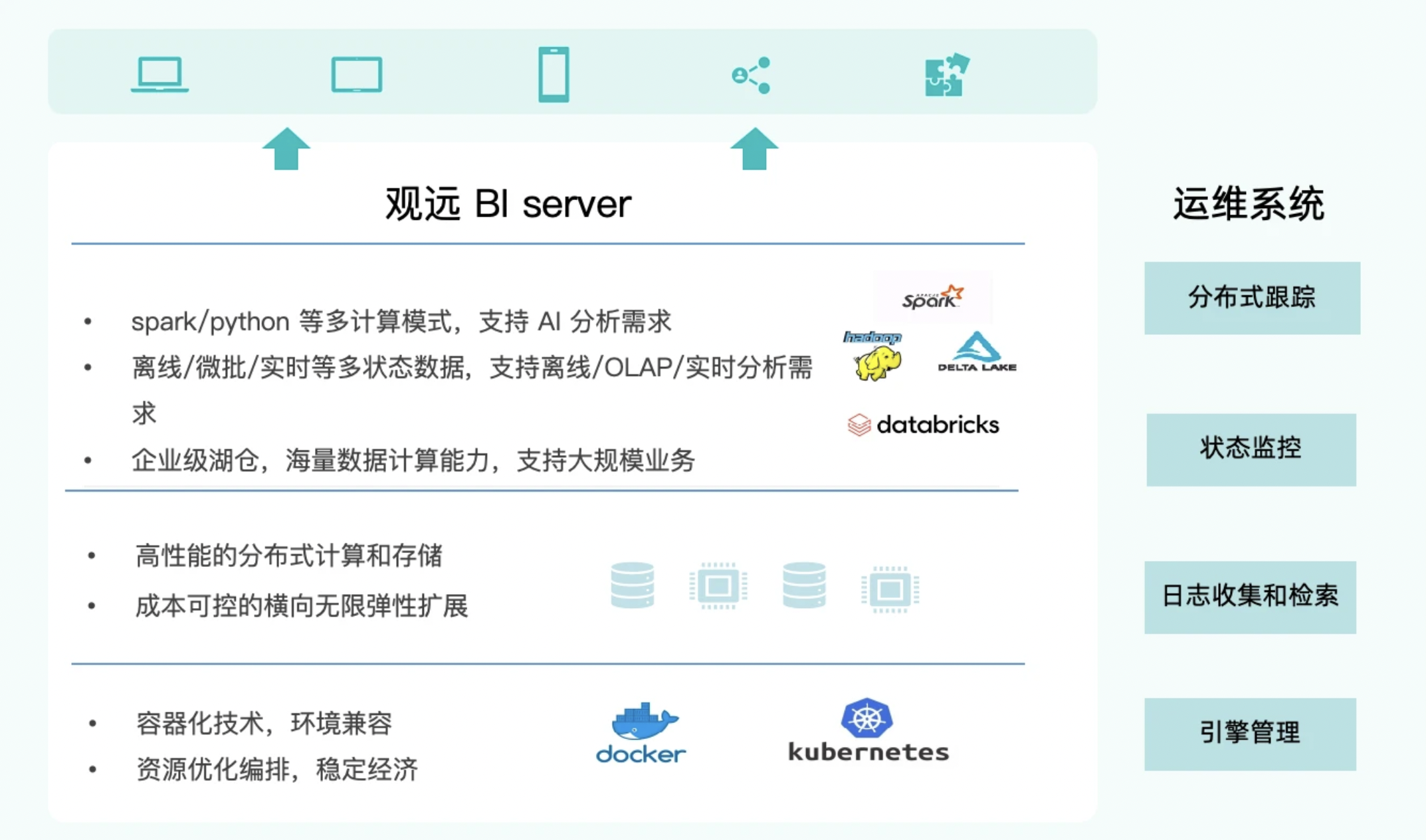
A typical enterprise-level support scenario
For enterprise-level deployment scenarios, we have built a truly business-usable enterprise-level big data BI analysis platform for users. Even with massive data, many platform users, backward compatibility, and scalability needs, Guandata BI can easily cope.
At the same time, high-availability architecture ensures continuous and stable business availability, and containerized deployment provides self-recovery capability. All components are deployed without single points, eliminating system risks caused by single-point failures and continuously ensuring business availability.
1. High Elasticity
Guandata BI is based on a cloud-native system and deeply integrates Hadoop and Databricks big data architectures. It supports enterprise-scale business needs with tens of thousands of users and tens of billions of data, ensuring business usability. The integration of cloud-native and big data allows BI to adapt to unlimited expansion for enterprise business at low cost, avoiding the dilemma of reconstruction every two years or migration every three years.
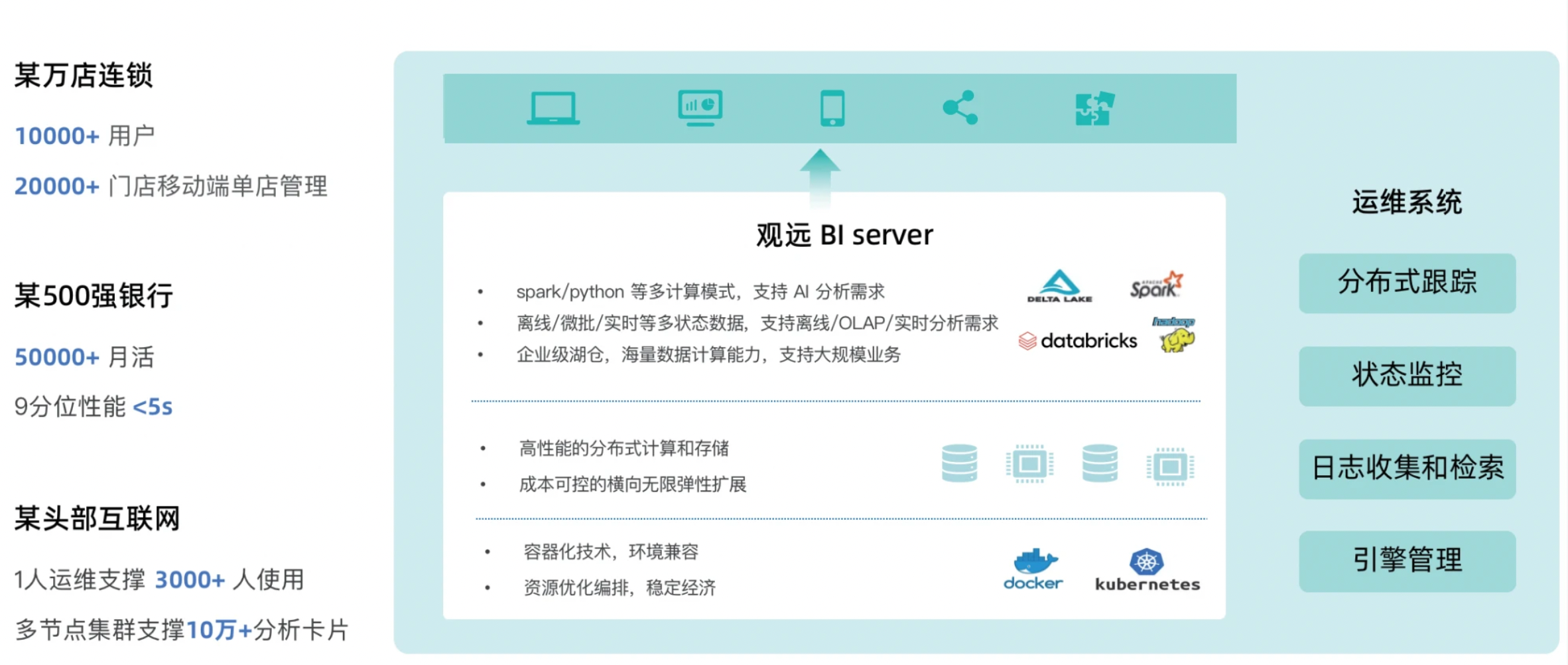
2. High Performance, High Stability, High Concurrency
Guandata BI adopts a high-availability solution design, with self-recovery capability based on containerized deployment. All components are deployed without single points, and core modules support multi-replica and second-level failover, ensuring continuous system stability.
With the help of an ultra-fast engine, it supports second-level response for tens of billions of data in cluster mode, achieving high-performance computing and query needs, and supporting tens of thousands of active users.
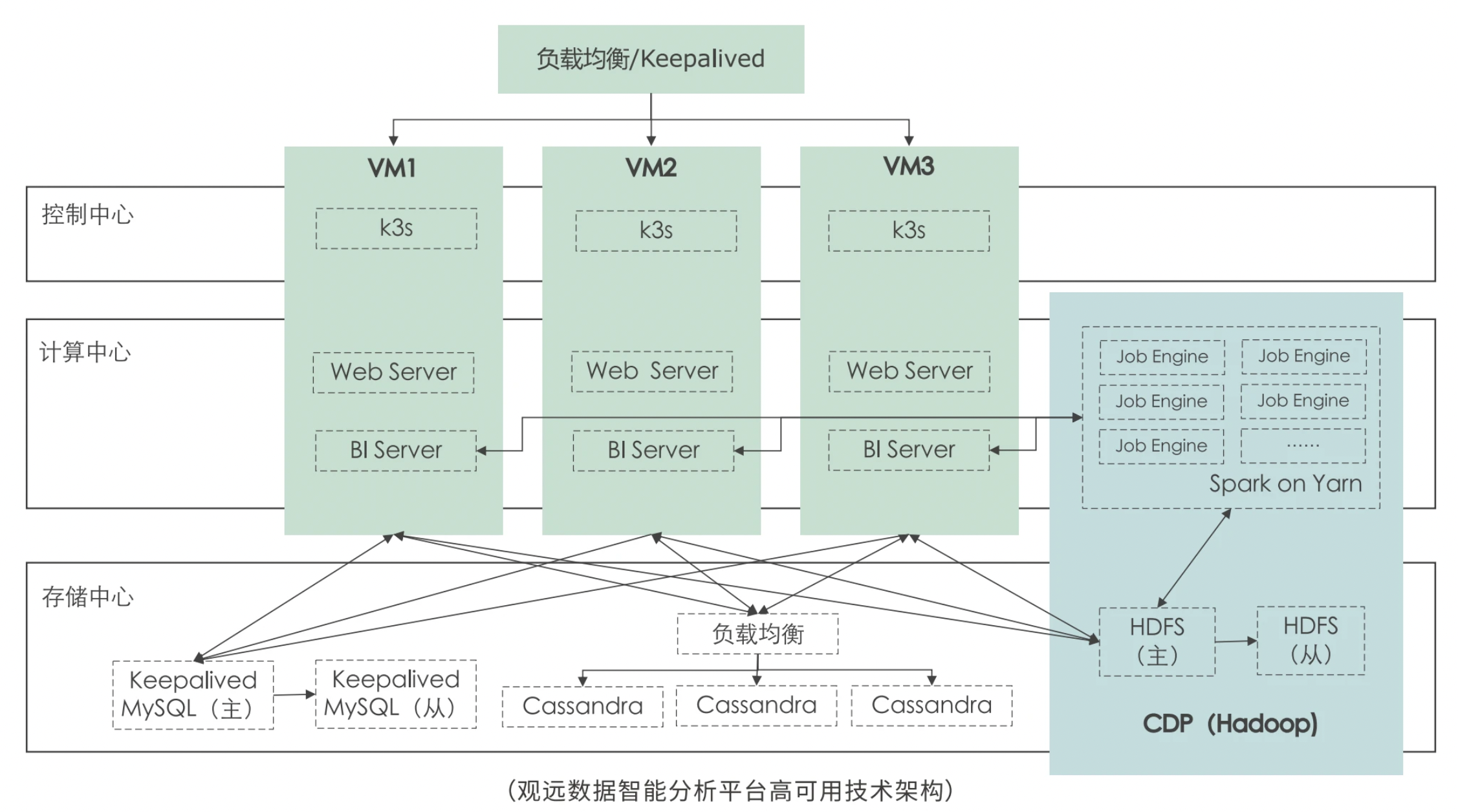
3. High Openness
Collaboration capability is a highlight of Guandata BI. Guandata BI provides a variety of open integration capabilities, supporting rich system integration. It supports deep integration with mainstream OA for single sign-on or password-free login, subscription push, message alerts, and other business integration. It also supports flexible business scenarios such as iframe page integration, API, and various chart plugin integrations.
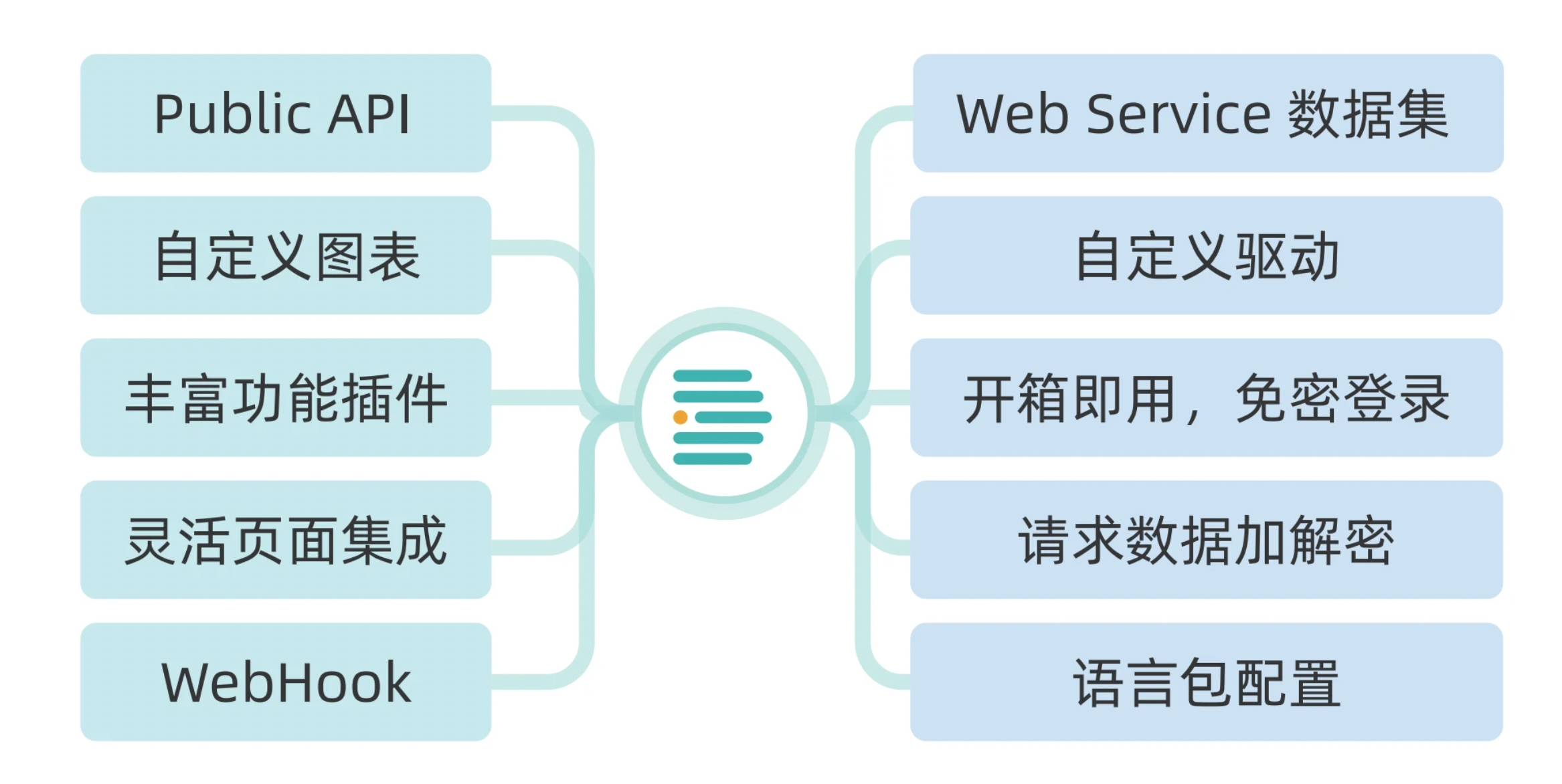
4. High Control
Guandata BI adopts a cloud-native architecture, providing a five-dimensional security architecture (four horizontal, one vertical), including resource and permission management, data masking, watermarking, etc., to ensure data security. It also provides intelligent cloud inspection services, using 100+ diagnostic indicators for lightweight governance of business asset data and systems.
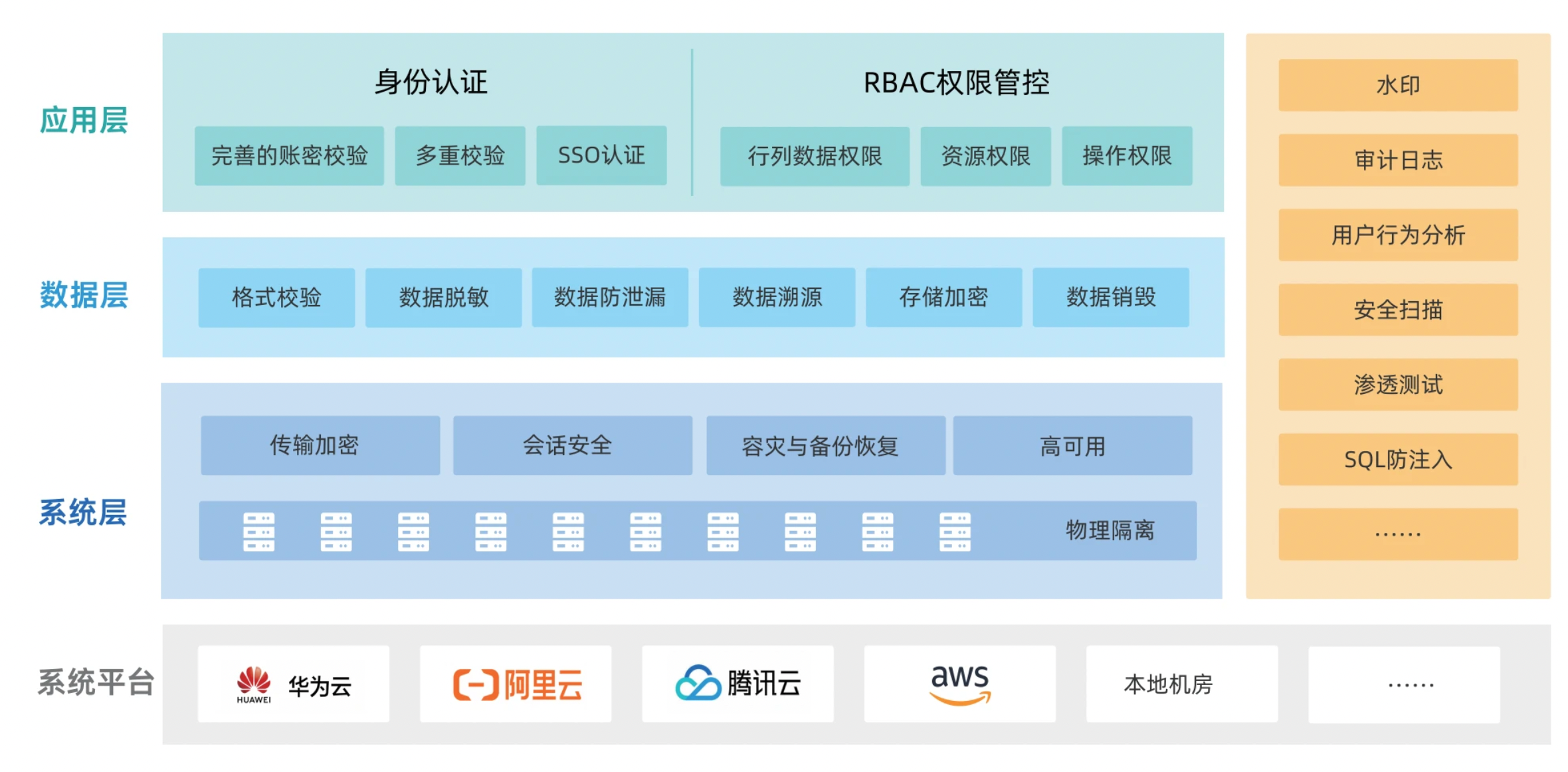
In addition, Guandata BI is the first BI platform to pass the "Trusted Big Data" evaluation in the Xinchuang environment, with deployment and operation capabilities in the Xinchuang environment.